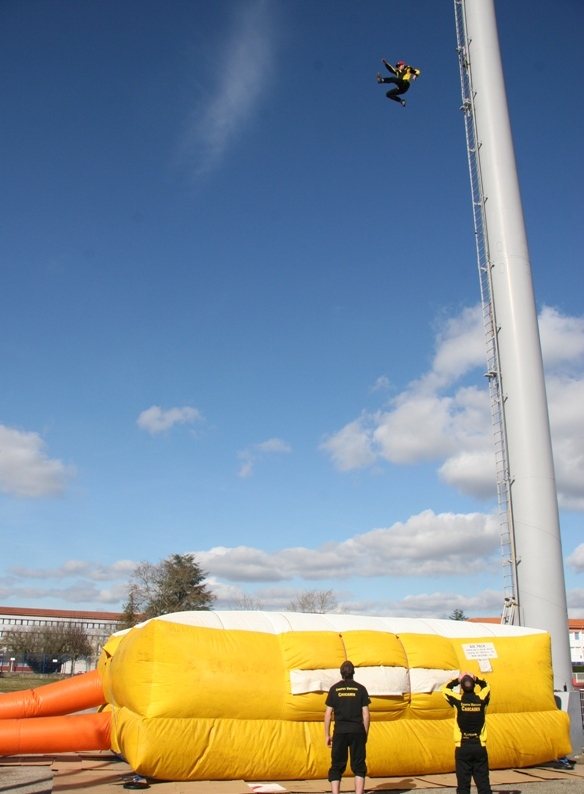Innovative Engineer John T. Scurlock Transformed Safety with Inflatables

On November 29, 1972, a devastating fire engulfed the Rault Center, a high-rise building in downtown New Orleans, leading to the tragic deaths of four women who jumped from the 15th floor in a desperate attempt to escape the flames. This catastrophe became a pivotal moment for John T. Scurlock, an engineer who was inspired to create a life-saving inflatable cushion designed to safely catch individuals jumping from significant heights. Scurlock's journey began when he enlisted the help of his sons, who tested the prototype by jumping from the roof of their home onto the inflatable cushion.
Scurlock's innovative safety air cushion, patented in 1973, rapidly gained traction and is now utilized by fire departments around the globe, from New York to Tokyo, to prevent fatalities in emergencies. His primary invention, often referred to as the 'bouncy castle' or 'space pillow,' emerged from a deep understanding of inflatable technology and a desire to make a difference in people's lives.
In the wake of the fire tragedy, Scurlock's determination to engineer a safe landing system was motivated by a profound sense of responsibility. "My father's goal was to prevent accidents like what happened in the Rault Center," stated Jeff Scurlock, John's son and current owner of Space Walk Inflatables. "The inflatable cushion was born from that desire to save lives."
Scurlock's background in aerospace engineering, particularly during his tenure at NASA in the early 1960s, influenced his approach to inflatable structures. At NASA, he contributed to projects exploring inflatable space habitats, which led to his interest in creating inflatable safety devices. As he experimented with various designs, including a commercial sewing machine set up in his garage, he sought to create a product that could withstand the impact of a fall.
However, the journey was not without challenges. Early iterations of the bouncy castle faced safety concerns, culminating in a lawsuit after a carnival worker suffered a fatal accident. Recognizing the need for enhanced safety features, Scurlock redesigned the inflatable to include protective elements such as netting and cushioning walls. By 1972, he and his family launched Space Walk Inflatables, a company that would revolutionize the inflatable rental market.
According to Dr. Benjamin Gorissen, a Professor of Inflatable Mechanics at KU Leuven in Belgium, "The engineering behind inflatable structures is complex, requiring precise calculations to ensure safety and functionality. John Scurlock's contributions to this field have had a lasting impact on both entertainment and safety."
Over the years, the bouncy castle industry has blossomed into a $4 billion market, driven by a surge in rental popularity for parties and events. Despite the commercial success, the Scurlock family continues to prioritize safety, producing advanced air cushions capable of supporting individuals from heights of up to 200 feet.
John Scurlock passed away in 2008, yet his legacy lives on through the thousands of lives saved by his inventions. Today, Jeff and his brother Mials manage Space Walk Inflatables, continuing their father's commitment to safety and innovation. "Dad always believed in creating solutions for real-world problems," Jeff recalled. "His last project was an inflatable palm tree, but his legacy is much larger than that. It's about saving lives and making the world a safer place."
As inflatable technology continues to evolve, the Scurlock family remains dedicated to improving their products. The journey from a backyard experiment to a global safety solution underscores the profound impact one engineer can have in transforming the landscape of both entertainment and emergency response.
Advertisement
Tags
Advertisement





